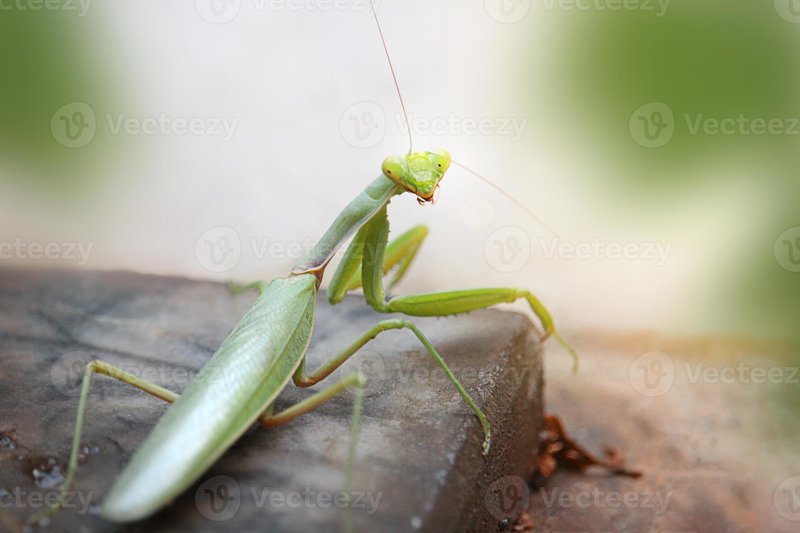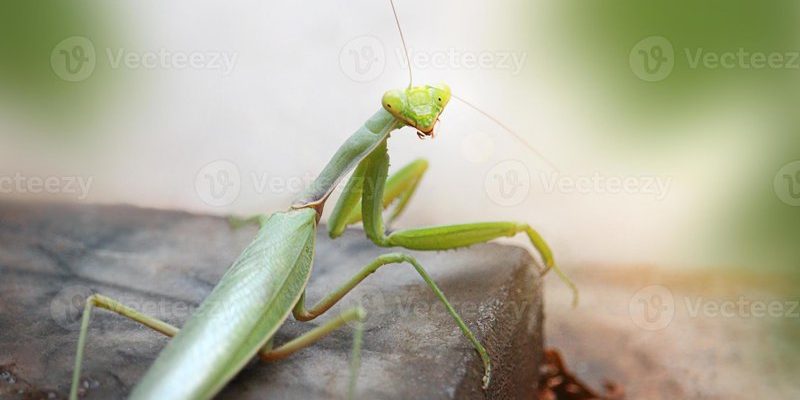
One of the first things you’ll notice about a praying mantis is their unique body structure. Generally, they have long, slender bodies that can range from around 2 to 6 inches long, depending on the species. Their triangular heads have bulging, compound eyes that allow them to see almost all around them without moving their heads. This gives them an edge as they scan for prey.
Another fascinating feature is their front legs, which are adapted for grabbing prey. These legs are equipped with sharp spines, making them resemble a pair of deadly spears. When a mantis spots a target, it can strike with lightning speed, often capturing its meal before it even realizes what’s happening. It’s like watching a master martial artist at work!
In terms of coloration, praying mantises can vary widely. They can be green, brown, or even vibrant shades of yellow, which helps them blend into the foliage where they usually reside. This camouflage is crucial for both hunting and avoiding predators. In short, their physical characteristics are not just for show but play vital roles in their survival.
Life Cycle and Reproduction
The life of a praying mantis begins with an egg case known as an ootheca. A female mantis can lay anywhere from 100 to 400 eggs at once, depending on her species and environmental conditions. After a few weeks, tiny nymphs emerge from the case, looking remarkably like miniatures of the adults. It’s both adorable and slightly eerie all at once!
As they grow, these nymphs will molt several times. Each molt allows them to grow larger and develop their adult features. Interestingly, during the mating process, female mantises are known for their notorious behavior of sometimes eating the male after mating. While this might sound gruesome, it’s a natural part of their reproductive strategy, possibly providing nutritional benefits to the female for egg production.
As they reach adulthood, praying mantises have a lifespan of about 6 months to a year, depending on environmental factors. In the wild, they face various challenges, including predators like birds and other insects. Despite these threats, their life cycle remains a remarkable journey of survival and adaptation.
Diet and Hunting Techniques
When it comes to food, praying mantises are true carnivores. They primarily feed on a diet of live insects, including flies, crickets, and even other mantises if the opportunity arises. Their hunting techniques are fascinating. They rely on a blend of stealth and speed, waiting patiently for the perfect moment to strike.
Once a potential meal is within striking distance, a mantis will extend its front legs with incredible speed. This ambush tactic is often successful, and they make quick work of their prey. Some species even use a method called “sit and wait,” where they remain incredibly still, blending into their surroundings until an unsuspecting insect comes too close.
What’s even more interesting is their ability to rotate their heads to scan their environment. This allows them to have a 180-degree field of vision, making it easier to spot both prey and potential threats. In a way, they represent the perfect blend of patience and aggression — two qualities that are essential for a successful predator.
Habitat and Distribution
Praying mantises inhabit a wide variety of environments across the globe. You can find them in gardens, forests, grasslands, and even deserts. Generally, they prefer areas with plenty of vegetation, which helps provide both food sources and hiding spots from predators. They are typically found in warmer climates, but some species have adapted to cooler regions as well.
In terms of distribution, praying mantises are widespread. You can find them in North America, Europe, Asia, and parts of Africa. There are over 2,400 species recognized worldwide, and they vary greatly in size, color, and behavior. Each species has adapted to its specific environment, showcasing the incredible resilience and versatility of these insects.
Interestingly, some mantises have even been introduced to new regions intentionally as a form of biological pest control. This move brings its own set of ecological implications, prompting discussions about the balance of natural ecosystems and the potential impact of introducing non-native species.
Conservation Status
While many species of praying mantises thrive in their natural habitats, some are facing challenges due to habitat loss and pesticide use. Urban development and intensive agricultural practices can reduce their populations by destroying their natural environments. It’s important to recognize that even common insects like the praying mantis can be indicators of ecological health.
Conservation efforts for praying mantises often focus on preserving their habitats and encouraging organic gardening practices. By reducing the use of harmful chemicals, we can help maintain healthy insect populations, including these remarkable predators. After all, a thriving ecosystem relies on the balance of all its inhabitants, big and small.
Encouraging local biodiversity is key. This means more than just thinking about praying mantises; it involves creating habitats that attract various beneficial insects. Simple actions like planting native flora, reducing pesticide use, and promoting organic farming techniques can go a long way in supporting praying mantis populations and other beneficial insects.
Fun Facts About Praying Mantises
- Praying mantises can be found on every continent except Antarctica.
- They have been around for over 300 million years!
- The name “mantis” comes from the Greek word for “prophet” or “seer” due to their prayer-like posture.
- Some species can change color to adapt to their surroundings.
Praying mantises are extraordinary creatures that captivate our curiosity and admiration. Whether you encounter one in your garden or read about them, their unique hunting techniques and fascinating life cycles remind us of the wonders of the natural world. These insects play a vital role in maintaining balance in ecosystems, and understanding them can lead to greater appreciation for biodiversity.
So the next time you see a praying mantis, take a moment to appreciate its beauty and importance in our environment. They deserve our respect as powerful predators and remarkable survivors in the complex web of life.
FAQ
Are praying mantises dangerous to humans?
No, praying mantises are not dangerous to humans. They are non-venomous and primarily feed on insects. While their appearance may seem intimidating, they are harmless to people.
How long do praying mantises live?
On average, a praying mantis can live about 6 months to a year, depending on the species and environmental conditions. Factors such as climate and availability of food play a significant role in their lifespan.
Can a praying mantis fly?
Yes, some adult praying mantises can fly. However, not all species are strong fliers. Their ability to fly often helps them escape predators or find new habitats, but you’ll typically see them perched on plants or waiting for prey.
What do baby praying mantises eat?
Baby praying mantises, or nymphs, primarily eat tiny insects like aphids and fruit flies. As they grow, they will gradually take on larger prey, similar to their adult counterparts.
Do praying mantises have any natural predators?
Yes, praying mantises have a range of natural predators. Birds, larger insects, and even reptiles can prey on them. Their excellent camouflage helps them avoid many threats, but they are still vulnerable in the wild.
Where do praying mantises go in winter?
In cooler climates, adult praying mantises usually die off in winter, but their eggs survive in the protective ootheca. The nymphs hatch when warmer weather returns, allowing the cycle of life to continue.
How can I attract praying mantises to my garden?
You can attract praying mantises by creating a welcoming environment in your garden. Plant native flowers, avoid using pesticides, and offer plenty of shelter through shrubs and grasses. This can help foster a healthy habitat for these beneficial predators.
Why do they sometimes eat their mates?
It might seem brutal, but female mantises eating their mates after mating is a strategy that can provide females with extra nutrition to support egg production. This behavior is common in the insect world and plays a role in their reproductive success.
Can praying mantises change color?
Yes, certain species of praying mantises can change color to blend in with their surroundings. This adaptative behavior enhances their camouflage, helping them avoid predators and ambush prey more effectively.

